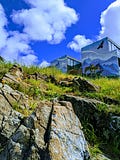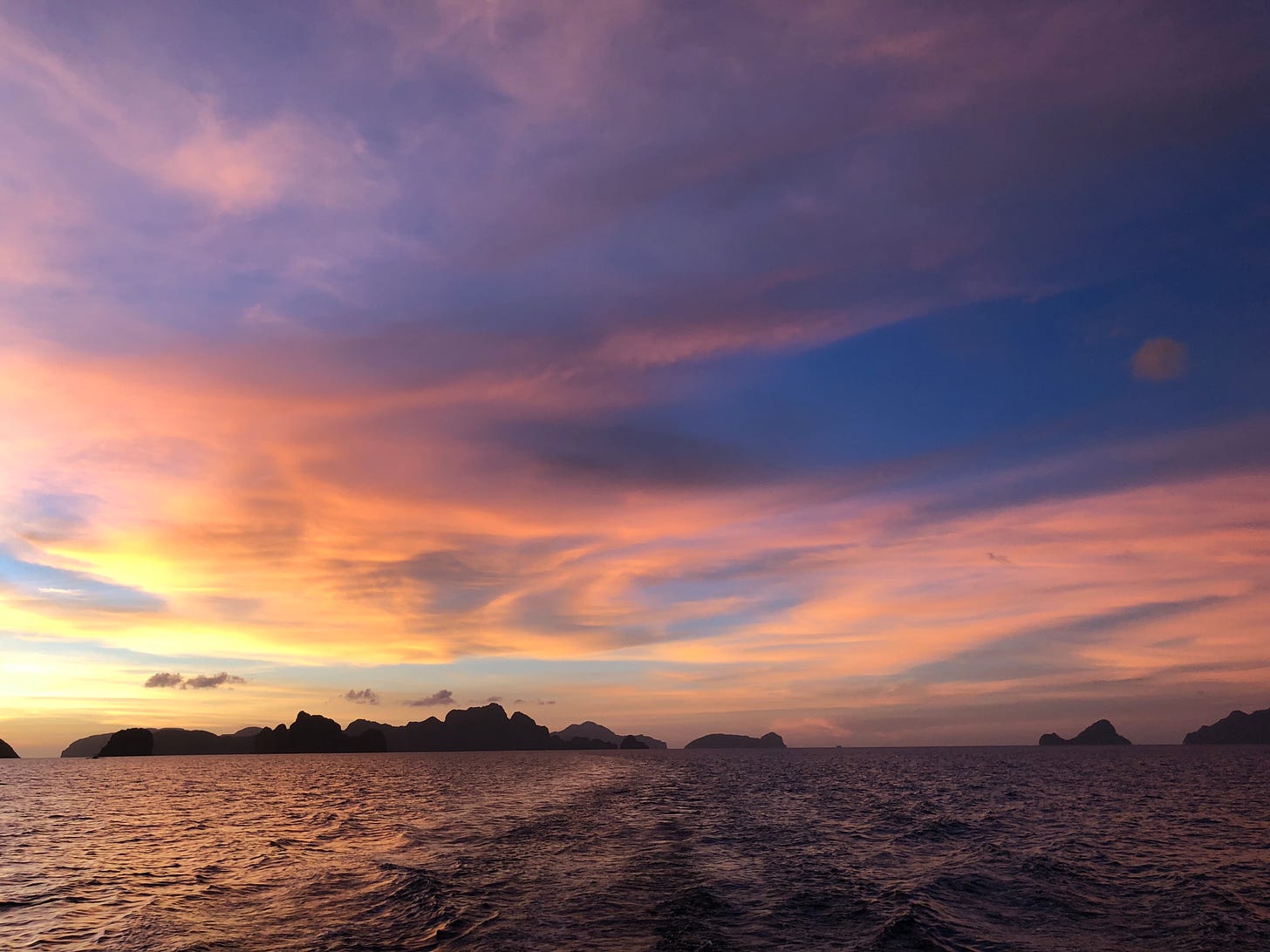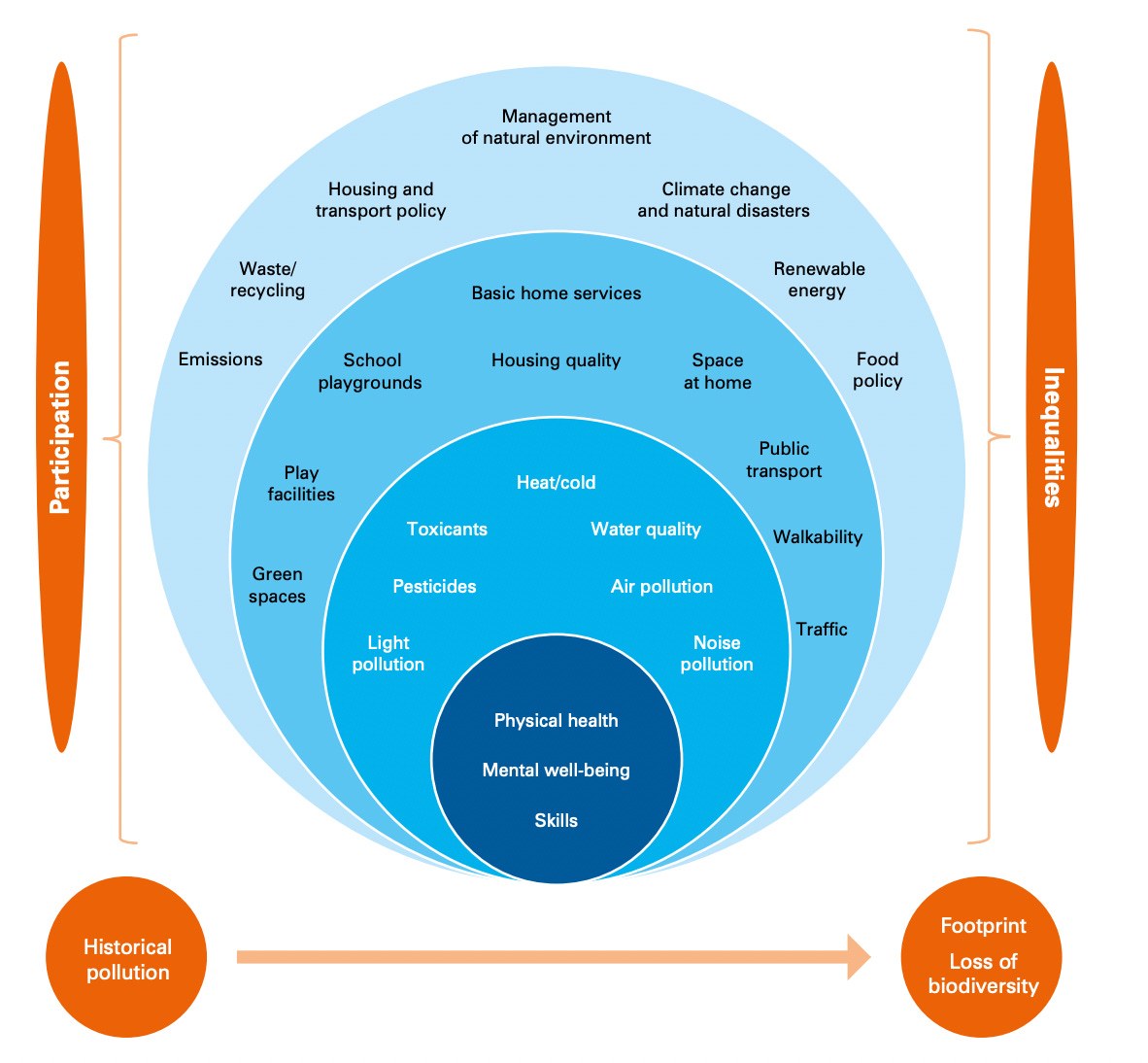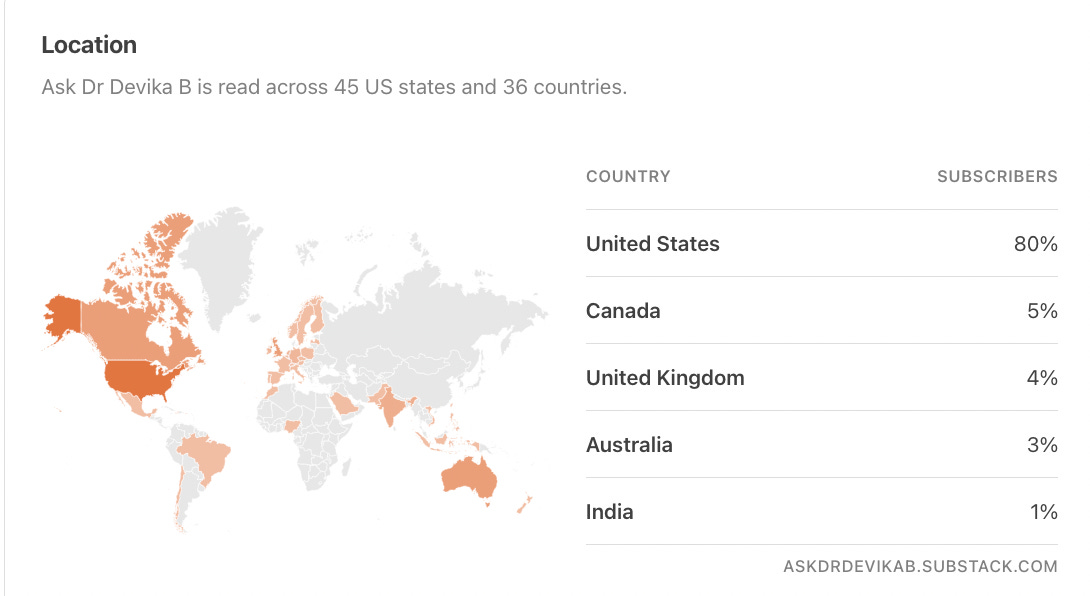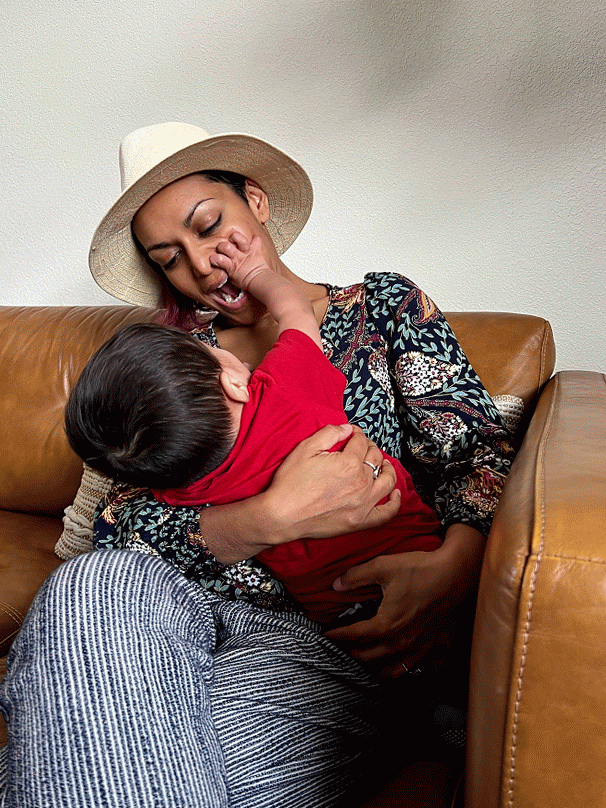Where in the world? It's always above us. BONUS: Tips for traveling with kids
My favorite way to destress; BONUS: how to travel well with kids
Dear community,
Happy June, and greetings from my family’s new home in Mexico City!
In the past few weeks, we’ve been considering how stress affects our health — along with powerful antidotes to undo impacts of stress both in the moment and to reverse longer-term effects on health.
Today, I’d like to share with you my personal favorite way to unwind and destress: contemplating the sky — savoring the clouds, changing light, and birdsong — in a special Where in the world? column that builds on where we’ve spent time in recent posts.
🌏Where in the world? An original photo or video from somewhere in the world — to unite us across borders — and open to your guesses as to where it might be.
We’re also going to be trying something new: with each Where in the world? column from now on, paid subscribers will be able to immediately access the answer to this week’s column AND a bonus mini-post with special travel tips pertaining to the location(s) featured, curated just for our community.
Today’s bonus mini-post for paid community members? Tips for how to travel well with little ones.
Where in the world? It's always above us.
The remarkable thing is that the sky and birds are always with us — and tuning into them bears us fruit no matter how much time or energy is available to us in any particular moment.
For me, especially as I set up a new home this week, I’ve been especially reminded that I can always rely on the sky and birds to center me.
When I let myself focus on it, the sky’s vastness, blueness, and ever-presentness fill me with wonder. When I’m over-focused on the contents of my own mind, the sky has the power to remind me of my relatively small place in the universe — and to recenter me on what’s important.
Concentrating on the ever-changing riot of colors as the sun sets lower and lower in the sky is a majestic experience and one of my favorite ways to unwind.
I’m someone who needs a focal point to enact presence and mindfulness — a way to simultaneously engage multiple senses and be truly in the moment. The sky, clouds, and birds can always be trusted to provide exactly that.
Where do you think the photos above were taken? And where have your favorite sunsets and times outdoors been?
When I was in my tweens and early teens, I spent four summers at an academic camp — an incredible place to find community with like-minded, quirky others. Each day was rich with traditions to which we’d look forward for months: for instance, on Tuesdays, we’d all wear our bathrobes.
During the afternoons, we could sign up for two formal activities. One activity whose very existence was remarkable still sticks with me: it was called, simply, ‘cloud watching.’ I remember we’d lay on our backs, gabbing and watching the clouds drift across the sky, while the sun played on our faces and the birds sang cheerily around us. I know my current ability to drift to a place of less worry and more wonder when I look up to watch the clouds today probably finds its roots in this childhood pasttime.
And there’s something about ‘tuning in’ to the frequency of birdsong that deeply centers me. Like the play of light and clouds across the sky, it’s empowering to know that birdsong is almost always there for us to find. And studies show listening to birdsong enhances well-being and can decrease symptoms of anxiety, paranoia, and depression — even when artificial.
We know that time in nature powerfully boosts how long we live and decreases the incidence of health conditions like heart disease, depression, and diabetes. Nature directly activates the parasympathetic nervous system — which helps us relax; decreases blood pressure, heart rate, and inflammation; and improves physiologic functioning, including cognitive function and sleep. It also allows for other well-being pillars, including exercise, mindfulness, and meaningful time with loved ones.
In pediatric studies where time in parks was ‘prescribed’ by a clinician, families with more time in parks had decreased stress by report and physiologic markers (eg: levels of the stress hormone cortisol in the saliva), as well as improved reports of resilience.
And it has acute benefits, too — seeing trees outside the window and having indoor plants in a hospital room is associated with shorter recovery from surgery and less need for pain medications.
We think the magic number for the ‘dose’ of nature needed for optimal health is anywhere above 2 hours per week.
All around, pretty profound effects. I love when the data backs up what we know to be true experientially.
So: join me. When you are stressed or in need of a frame shift, try lifting your sights up — to watch the clouds drift, listen to birdsong, or mindfully witness the sun set — even for a minute or two. And see if you feel any different.
Wishing you light,
Dr Devika Bhushan
Last time…
We featured the most incredibly family-friendly airport: Haneda Airport in Tokyo, Japan!
Interestingly, UNICEF ranks Japan second, after Finland, among OECD countries for optimal environment for children based on the following factors:
Where in the world is our community?
How diverse is our community here at Ask Dr Devika B?
So far, we are in 36 countries (up from 30 last we counted) and 45 US states (up from 42). Help us grow by recommending us to a friend who would benefit from this content on evidence-based well-being insights!
Tips for traveling with kids:
Of the two sky photos above: The first one was taken in San Francisco, at a park about a block from our former home; the second photo was taken at sunset in El Nido, Palawan, the Philippines (Manila was another former home for me growing up).
Three weeks after our baby, Rumi, was born in San Francisco in 2021, our friend based in wine country made us an offer to swap homes — she wanted to spend time in the city and in generously allowing us to nest in her much larger home, we were able to easily host loved ones visiting our little one.
Rumi’s life between 3 and 6 months was spent in Rome, Italy and Sevilla, Spain. Between ages 1-2 years, we spent periods of time in India and Puerto Rico. We are now planning on spending the next 6-12 months in Mexico and South America.
We have been able to find local childcare wherever we went — allowing us to work remotely and enjoy occasional adult time.
It’s overall been a delight to travel with our son, who has inherited our love for adventure. Even though the logistics are more challenging in some ways and the pace is much more baby-led, it’s been remarkable and a lot of fun to see new experiences through his curious eyes.
Here are some of our learnings:
Keep reading with a 7-day free trial
Subscribe to Ask Dr Devika B to keep reading this post and get 7 days of free access to the full post archives.


